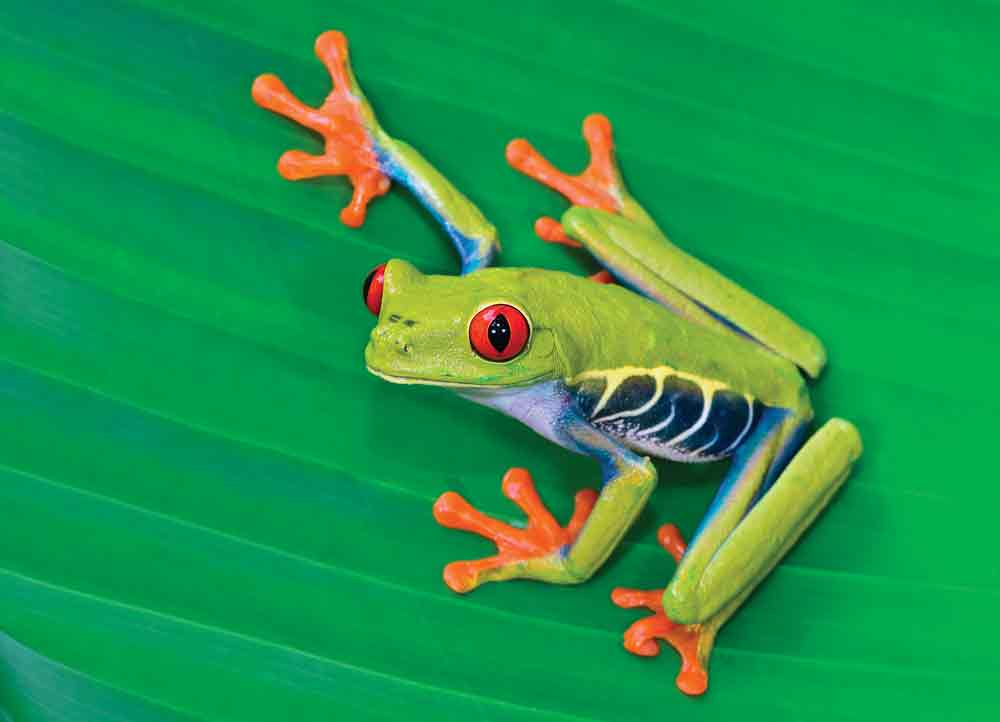Red-eyed treefrogs are fairly easy to house – lucky you! These animals do not get exceptionally large but do require a bit of room as adults.
Think of the tropical rain forest. A riot of green plants, consisting of unique shapes, colors, and textures, growing so dense it’s impossible to see a few feet ahead. Trees seemingly as tall as the sky, trunks serving as pillars holding up the heavens. Rare animals, found nowhere else on earth, flourishing in the forest primeval. Suddenly, a frog emerges from the foliage. What frog are you picturing? Chances are it’s a red-eyed treefrog (Agalychnis callidryas), the embodiment of the tropics in amphibious form. This red-eyed, blue-sided, and orange-gloved anuran is ubiquitous to the neotropics.
What better way to commune with this tropical wilderness in your own abode than to keep a piece of it at home? Fortunately, red-eyed treefrogs are regularly available and more easily kept in captivity now than ever before. Interested in learning what it takes to keep this charismatic microfauna at home? Well, you’ve chosen wisely – read on!
Red-eyed Treefrog Natural History
As you probably already know, red-eyed treefrogs inhabit the neotropics – the species can readily be found from southern Mexico, through Central America, and down into South America, all the way to Colombia. Throughout its range different populations exhibit unique coloration, patterns, and maximum sizes, hinting that we may see this widespread species broken down into multiple taxa in the future.
In my opinion, the red-eyed treefrog has what is probably the most poetic scientific name in all of amphibiandom, or at least among species most people are familiar with. Agalychnis callidryas comes to us from a combination of Latin and Greek, and roughly translates into “Bright Eyed Beautiful Tree Nymph,” an apt description indeed for this remarkably colorful hylid. They belong to the family Phyllomedusidae, also known as the leaf frogs, hinting at their preferred habitat and specialization. This makes their second most common name, the red-eyed leaf frog, make even more sense.
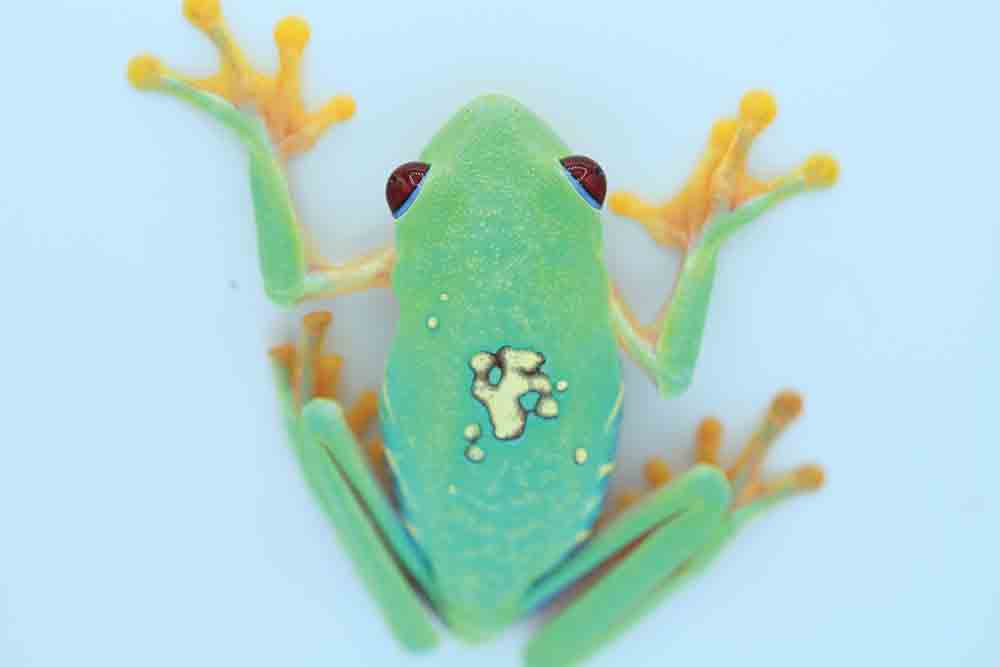
Panamanian speckled population. Photo by Zach Brinks
Red-eyed treefrogs were first described in 1885 and have since undergone numerous taxonomic revisions. One thing has remained constant, however – these remarkable amphibians have consistently stuck in the imagination of those dreaming of the equatorial Edens of the Americas. Fortunately for you, bringing this bright-eyed beautiful tree nymph home is easier than ever.
Finding a Red-Eyed Treefrog
Red-eyed treefrogs are fairly common in the amphibian hobby. Healthy red-eyed treefrogs, however, are not as common, but on the rise.
Many red-eyes in the trade are wild caught – they’ve been through multiple hands on their journey from the jungle to your living room, and there are plenty of bumps on their trip that can set you up for failure. When possible, please make sure you purchase captive-bred frogs. When that’s not possible, please seriously consider another herp pet.
Wild-caught frogs suffer from numerous issues that make success difficult. These animals are not used to a life in captivity – they are used to wide open spaces, not a glass barrier that limits movement. During their trip to the United States, these animals are often crowded in unsanitary conditions. Those that survive the trip often come with associated bacterial or fungal infections that require veterinary treatment. It’s common for larger treefrogs to suffer physical injuries from the packing and shipping process, such as rubbed noses, that may require treatment to prevent infection. Many wild caught animals don’t survive the trip, and their collection may have negative impacts on already strained wild populations.
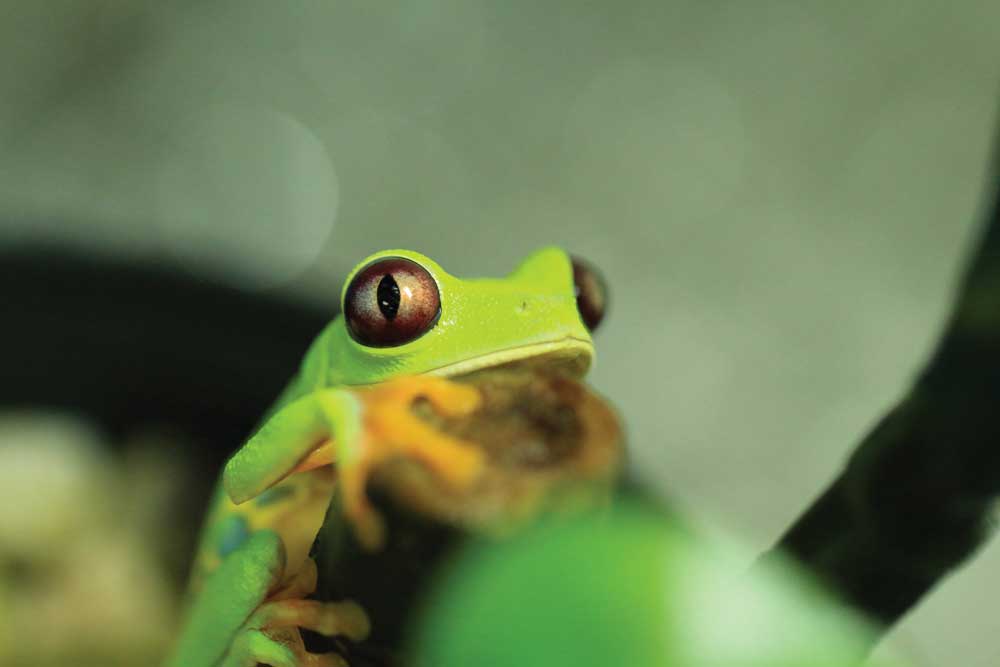
Panamanian flame eyes treefrog. Photo by Zach Brinks
Captive-bred animals, however, have no direct negative impact on wild animals. In fact, depending on their origin, they may actually have a positive impact on wild populations. At Josh’s Frogs, that’s a large part of why we do what we do – we want to link an animal’s success in the pet trade with its success in the wild. There are various ways to do so, including linking sales to grants or other ways of providing money to researchers and conservationists working to better understand and save the frogs we love. Our most recent venture takes that a step further, linking the actual availability of the frogs to conservation success.
Caring For The African Dwarf Frog
We’ve partnered with an experienced amphibian researcher and conservationist in Panama to offer healthy, captive-bred Panamanian red-eyed treefrogs in the United States, produced in Panama. A portion of the proceeds are donated directly to notable conservation organizations in Panama, such as EVACC (El Valle Amphibian Conservation Center). Funds from our purchase of these captive-bred red eyes are used to fund further research and conservation projects in Panama. Our hope is to correlate this project directly to the purchase of land these amazing amphibians inhabit, to ensure their survival long into the future.
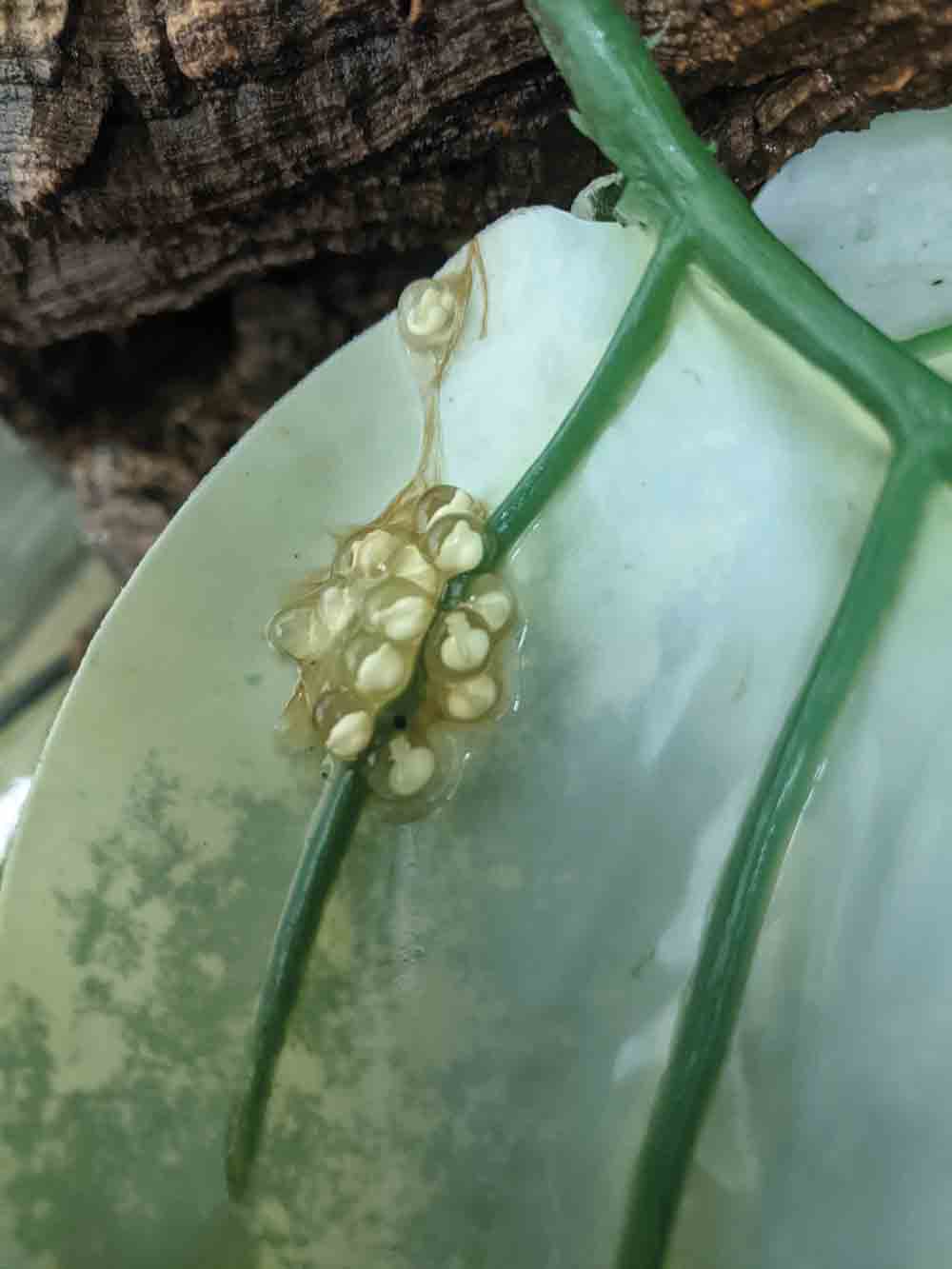
Red-eyed treefrog egg clutch. Photo by Zach Brinks
Captive-bred animals are adapted to surviving in captivity – they’ve never been in the wild, and are better suited to life under glass. They are much less likely to have parasites or other various maladies that can really impact their quality of life and longevity. In fact, quality animal vendors, Josh’s Frogs included, will test for common parasites, as well as the primary viral and fungal pathogens known to decimate amphibians (Chytrid and Ranavirus). In short, even though captive-bred animals tend to cost more, you really are getting what you paid for – a red-eyed treefrog that’s much more likely to thrive under your care, and much less likely to need veterinary treatment.
As far as where to find a captive-bred red-eye, there are three primary sources: pet stores, reptile shows, and online. Pet stores can be a dependable, local source for animals and knowledge. Expect to see higher prices than the other two potential sources, as well as a more limited selection. You will, however, have more of a chance to check out animals in person, and get an overall feel for the way the shop owner does business and cares for the animals.
Reptile shows are really starting up again across the country after a brief hiatus due to the pandemic. During these trade events, vendors from all over the country come together under one roof to offer animals, feeder insects, and various reptile and amphibian supplies. Reptile shows are a great chance to see (and buy!) a wide variety of animals you may not be able to see in person otherwise. Be cautious – just because a seller has a table at a reptile show does not mean they take great care of their animals, or are someone you’d want to do business with. Remember, the reptile show is just for a weekend, and you may never see the vendor again! Do your research and make sure you get contact information (and some kind of health guarantee) if you do make a purchase.
Last but not least are online vendors. True, anyone can make a website nowadays, but a quick online search can pull up reviews and ensure you’re purchasing from a business that stands behind their products. Online vendors should have plenty of pictures of the animals for sale, provide information on how to properly care for the animals for sale, and back up your potential purchase with some kind of live arrival and health guarantee. True, you may not get a chance to see the animals you’d be purchasing first hand until they arrive, but go with your gut – a website is a reflection of the business in question, after all! For many around the country, online vendors are a great way to acquire red-eyed treefrogs.
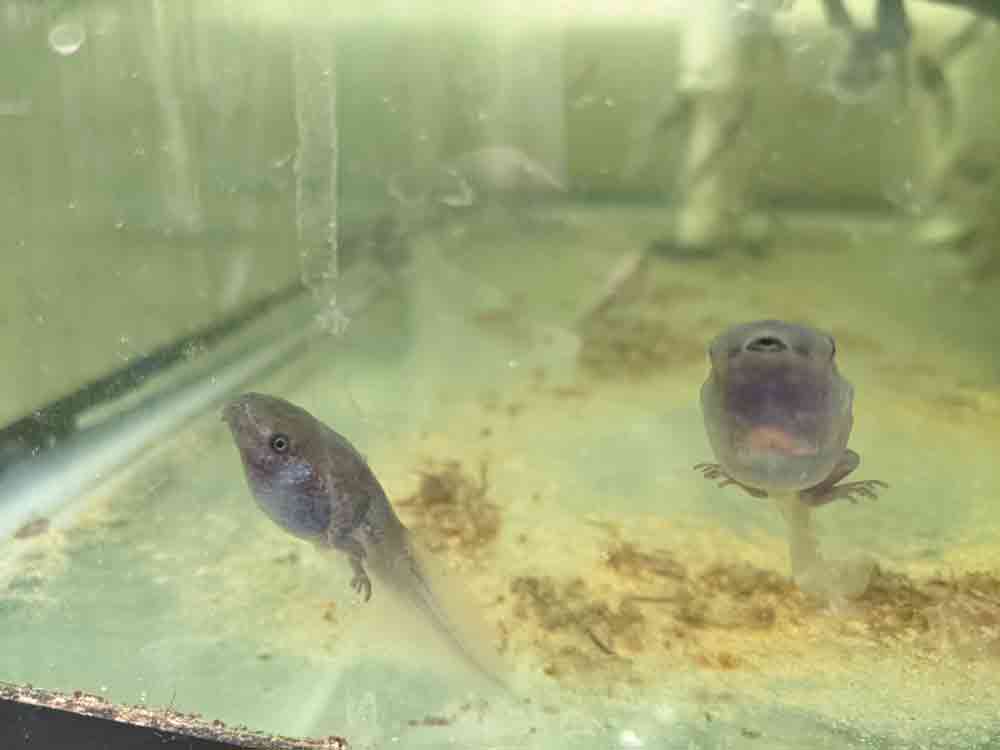
Red-eyed treefrog tadpoles. Photo by Zach Brinks
There are a few things to keep in mind before purchasing a red-eyed treefrog. Make sure the animal is captive-bred, of course, and at least 6 to 8 weeks old. At this age, it should be around 1-1.25 inches long and has a history of eating well. We’ve found that animals of this size handle shipping well and quickly adapt to their new surroundings. I’ve found many captive-bred red-eyes listed for sale at a younger age. This may make them cheaper, but they often make for more challenging captives. Make sure the seller is knowledgeable about the animal in question, and has a solidly outlined policy in place to help support you before, during, and after the sale.
Red-eyed Treefrog Enclosure
Red-eyed treefrogs are fairly easy to house – lucky you! These animals do not get exceptionally large but do require a bit of room as adults. An 18” x 18” x 24” glass terrarium or a 29-gallon aquarium is capable of housing two to four adults. Ventilation is key, as stagnant air can quickly lead to problems. The top should consist of 50 percent or so screen to ensure that there is plenty of air exchange, but ensure that a high relative humidity (60 to 70 percent) can be maintained. You’ll need to strike that balance – good ventilation, but frequent misting so your froggy friends don’t dry out.
You’ll need to keep an eye on temperature, as well. Even though they’re from the tropics, red-eyes thrive in temperatures in the mid to high 70s Fahrenheit (24.4 to 26.1 degrees Celsius). Ensure the enclosure is maintained above room temperature via a low wattage heat bulb or other heating device. In a naturalistic vivarium, I’ve had luck using a submersible aquarium heater in the false bottom to raise ambient temperature. Make sure you’re measuring temperature and humidity daily with a quality digital gauge.
If you’ve chosen to keep your red-eyes in a naturalistic vivarium, congrats! Even though this method costs a bit more at start up, and requires more research to do right, I do feel it provides a better, more ‘closer to nature’ experience for your frogs. Learning how to set up a naturalistic vivarium is worthy of an article (or book, or series of books) itself, but in short consists of a drainage layer, substrate, and top layer of leaves to replicate the forest floor. Live plants provide visual barriers, surface area for the frogs to utilize and visual appeal. Microfauna (isopods and springtails) act as tank janitors to break down waste and keep the setup clean, without frequent substrate changes or full tank clean outs. Once fully functioning, a naturalistic vivarium requires very little in the way of maintenance.
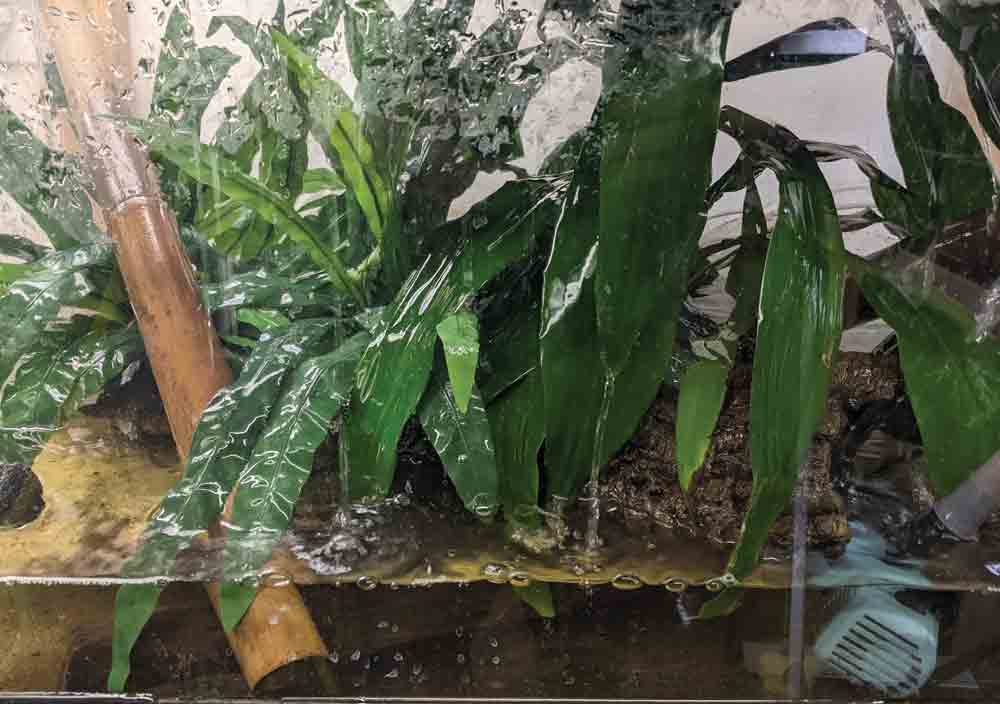
Red-eyed treefrog enclosure. Photo by Zach Brinks
A more typical setup, which many may find more straightforward and easier to run with, would consist of a much more simple substrate, such as foam or coco fiber. Artificial plants are easy to routinely clean, and substrate is spot cleaned weekly and fully changed at least once a month. Artificial vines, while resembling the real thing, fall a bit short, but the frogs don’t seem to notice the difference. Artificial setups require more time invested in regular cleaning, but are a bit cheaper to start out with.
Either way, you’ll want to provide a source of fresh water for your red-eyed treefrog. A large, easy to clean water dish is a must. Ceramic dog water dishes are a good choice – their smooth surface makes for easy cleaning, and many can even survive a trip through the dishwasher. Water should be changed once a day. Even though it may look clean, your red-eyes are going to use their water dish to soak up water and go to the bathroom first thing in the morning, right before they go to bed.
You’ll find mixed thoughts on providing UV to your red-eyes. In my opinion, even if it’s not absolutely necessary, providing a low level UV bulb is a good idea. There is some evidence that red-eyes would be exposed to some UV radiation in the wild, and there’s certainly no harm in providing it in captivity, as long as the frogs can get away from it if they desire.
Feeding Red-eyed Treefrogs
Red-eyed treefrogs appreciate a varied diet. At Josh’s Frogs, we primarily feed them banded crickets, with several different feeder insects mixed in as treats and enrichment. Dubia roaches, hornworms, silkworms, and black soldier fly larvae are appreciated, especially when offered via feeding tongs. Waxworms are a high fat treat that is relished, especially if they are allowed to pupate and the adult moths are offered to your red eyes.
Selecting the size of the feeder insect is pretty straightforward. In general, the length of the feeder insect should not exceed the distance between your red-eye’s eyes, as measured across the top of its head. A 1-1.25” juvenile red-eyed treefrog will readily consume 1/4”-1/2” crickets, while an adult will easily devour 1” crickets. It’s better to offer smaller, more numerous prey items than a few large ones – the larger the feeder bug, the increased chance of impaction.
In addition to offering feeder insects via feeding tongs, bowl feeding can ensure your treefrogs get plenty to eat. A smooth sided bowl is used to contain feeder insects so they can easily be picked off by the frogs, and the keeper (that’s you!) can ensure that a proper number of feeder insects are being regularly consumed. In general, your red eye should be consuming six to eight prey items every couple of days.
All feeder insects should be dusted with a quality vitamin and mineral supplement. In the wild, your red-eyes would be chowing down on a wide variety of different arthropods, all of which would have consumed a vast number of different plant species. It’s impossible to replicate that diverse of a diet in captivity, so those vitamin and mineral supplements have to make up the difference! Popular brands include Rep-Cal and Repashy – we’ve had luck with both, or a combination of the two.
Breeding Red-eyed Treefrogs
Red-eyed treefrogs are fairly straightforward to breed, and it all starts with conditioning your adult animals. These gorgeous frogs have the ability to produce nearly year round, but you can help cycle and prep your animals to increase the odds of breeding success.
A month or so before the planned breeding attempt, start feeding your red eyes some extra rations. Ensure those feeder insects have been properly gutloaded to pack in extra nutrients – the health of your future baby frogs depends on it! Raise the temperature a few degrees (still make sure to keep it under 80 degrees Fahrenheit or 26.7 degrees Celsius), and mist more frequently. Your goal is to replicate an impending rainy season. A word of caution – this may trigger male red-eyed treefrogs to try and amplex females. If you see your frogs trying to get free piggy back rides, separate the sexes.
Male red-eyes are pretty much always ready to go. The prep work is really aimed at cycling females and getting them to develop eggs. During the end of the cycling, females should appear visually swollen, and eggs may be visible through the translucent skin on the belly. Once eggs are visible it’s time to introduce your frogs to a rain chamber.
Rain chambers vary greatly in construction and design, but they all are specialized enclosures that mimic habitat during a torrential rainstorm. In short, rain chambers generally have a full water bottom (to receive tadpoles), where a pump sprays water from above via a rain bar over the enclosure. Plenty of broad, smooth leaves are present as egg laying surfaces. Do you research – it can be very hard to successfully breed red-eyes without a viable rain chamber.
If you can time it right, add the adult red-eyes to the rain chamber when a storm front is moving through. The drop in barometric pressure associated with storms can encourage mating and successful egg laying. Run the pump/rain bar at night for several hours at a time, with a couple hour break right in the middle. For example, you could have the rain chamber run for three hours after lights out, break for two hours, run for three hours, break for four hours, then run for an hour during the 12 hour night cycle. Run the rain chamber less frequently during the day, but regularly to help maintain humidity. At Josh’s Frogs, we run ours for 15 minutes every four hours or so. Frogs are not fed while in the rain chamber – keep a close eye on body shape and be ready to remove any frogs that begin to appear skinny.
When choosing adults for the rain chamber, choose the plumpest frogs you can. Try to have ‘extra’ males – competition between males will help ensure successful mating. The more, the merrier! Make sure the frogs have plenty of places to hang out during the day, and that they can get away from any direct water flow. They’ll also need to easily leave the water at the bottom if they fall in. Mating can be a clumsy activity, and they definitely will.
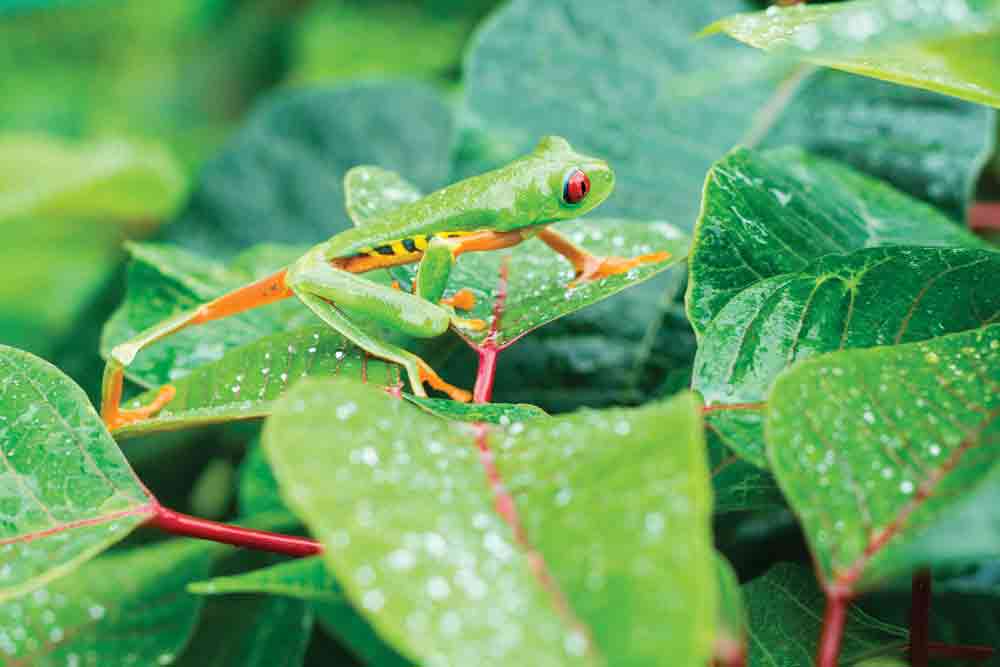
Red-eyed treefrogs require frequent misting so they don’t dry out. Photo by Jason mnz/Shutterstock
Once eggs are visible, remove the adult red-eyes. It’s easy for adult frogs to accidentally knock eggs into the water, and submersed eggs will quickly perish. Egg clutches can contain anywhere from 30-150 eggs, with older and larger females laying more eggs. On average, we get around 60-75 tadpoles per clutch.
Eggs typically hatch 10-14 days after they are laid, and develop quickly. After a few days, the round, green nucleus of the egg has started to elongate into a recognizable tadpole shape, which will grow in size until popping out of the egg and dropping into the water. You may get eggs that fail to develop. If you do not see development in the first three to four days, use a turkey baster to carefully remove those infertile eggs. They can quickly mold and cause the entire clutch to fail.
As tadpoles hatch and fall into the water, leave them alone until they are actively swimming. For the first few days, the tadpoles will be feeding off of their supply of yolk, and there’s no benefit to feeding. Once they’re swimming around, carefully remove them (once again, turkey baster to the rescue!) to another tank for rearing. A fully cycled aquarium with a sponge filter works great. We use reverse osmosis water, reconstituted with Indian almond leaves and R/O Rx. Change around ¼ of the water every few days, taking care to remove any uneaten food from the bottom of the aquarium when sucking out the water with an aquarium gravel vac. Feed tadpoles a small amount of food frequently – we offer Josh’s Frogs Tree Frog and Toad Tadpole Food, frozen bloodworms, and the like several times a day.
In about five to six weeks, the tadpoles will sprout back legs, then front legs, and leave the water. Once they’ve left the water of their own accord, it’s time to remove them and begin caring for your new red-eyed treefrog froglets. Set them up on damp paper towel and do not offer food until they have completely absorbed their tail. Once the tail is gone, begin to offer 1/8” or small 1/4” crickets daily.
Conclusion
Made it this far? If so, you must be really interested in bringing red-eyed treefrogs into your home. These colorful, charismatic amphibians are a must for anyone interested in the neotropics and amphibian keeping, and are easier than ever to care for. You’ve just read through a crash course in locating these fantastic frogs, their care, and their breeding – as long as you follow what you’ve read, you have great odds at being a successful frog keeper.
Zach Brinks is a life long herper. He has kept and bred reptiles and amphibians since he was 5, and has bred more than 100 species of herps in the last three decades.

